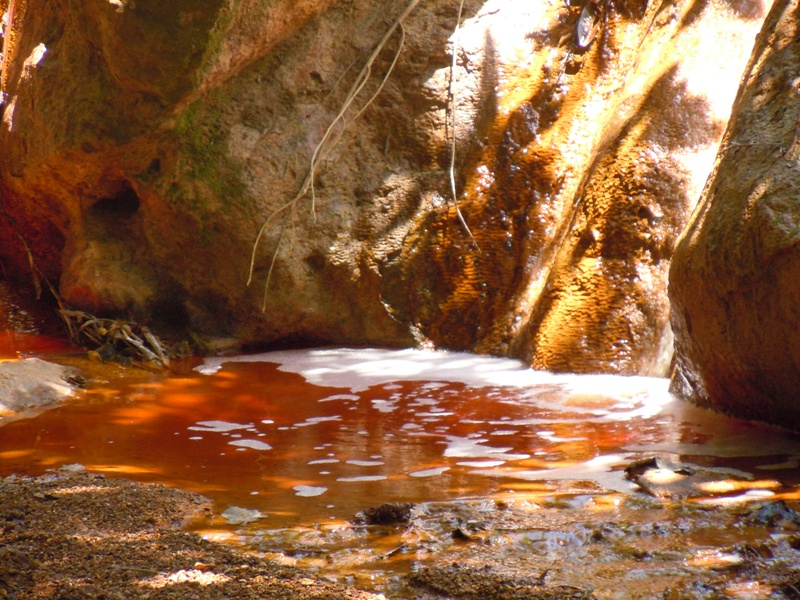Mining for Gold: A “Pact with the Devil”?
The economic crisis—and the rising price of gold—have spurred North American firms to reopen mines and attack environmental regulations. Here’s what we can learn from El Salvador’s moratorium on new mining permits.
Posted Aug 28, 2012
“The water‘s bright orange,” we exclaim while balancing ourselves precariously on rocks alongside a spring. We are visiting the community of San Sebastian in the province of La Union in the northeast corner of El Salvador. Above us stands a mountain with a prominent slash where U.S. and other firms mined gold for over a century, a mountain that also happens to be a key watershed for this area.
“I’ve seen this water also cranberry red and also bright yellow,” our companion responds. But then she quickly adds: “Remember: don’t touch the water. Last time I was here, I slipped and ended up with rashes all over my leg and stomach where I got wet.” She doesn’t need to remind us. Experts from the Salvadoran government’s Ministry of the Environment and Natural Resources were here in July 2012 and they found levels of cyanide and iron that were through the roof.
What at first seems odd is that there hasn’t been commercial gold mining here for at least a decade—since the U.S. company Commerce Group left. But, as we learn on this, our second, research trip to El Salvador, a decade or two can be a blink of an eye for the environmental havoc wreaked by gold mining.
These ancient mountains contain not only gold and many other minerals, but also sulfide. It is a deadly combination with long-term consequences: once the mining excavations expose sulfide to the air and rain, it is converted to sulfuric acid. With each new rain, the acid unleashes new toxic substances down the mountain and into the springs and streams. In a nutshell: a long-term poisoning of the water, the land, and the people.
The now-orange spring water flows into a now-lifeless stream that flows into the San Sebastian river that, in turn, flows into the Santa Rosa river. Along the way, the water is used by many before it enters the Gulf of Fonseca far to the south and continues its journey.
The technical term for the environmental nightmare that is unfolding in front of us is "acid mine drainage.” Acid mine drainage has plagued mine sites from Pennsylvania to El Salvador for centuries. Mining expert Robert Goodland stresses that some communities near ancient Roman mines in England and Spain continue to suffer the effects of acid mine drainage over 2,000 years after the mines were closed. And remediation—or “clean up”—is technically and financially challenging. As a local college student who has studied the situation here explains: even if the funding were available, “we wouldn’t be able to clean this up even in 100 years.”
